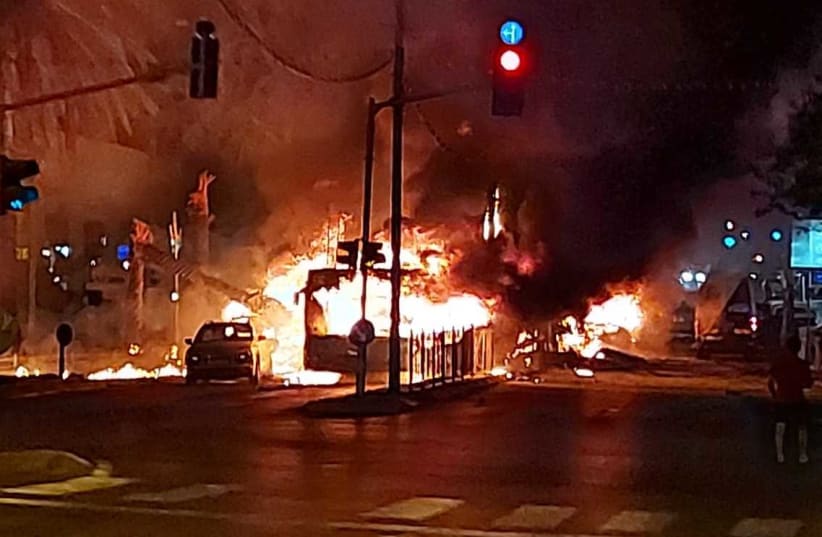The images coming from Israel of a massive fire south of Ashkelon, a bus blown up, fires near a gas station and also interceptions near the airport are a message to the region.
They appear to show an Israel that is more vulnerable than at any time in recent memory. One might have to reach back to 2009 or 2006 for this sense, but even then it was regional. This has serious ramifications because Iran and Hezbollah may think that Israel is weaker than it is.
Images are important. The images of Israeli police in al-Aqsa Mosque helped to create an excuse for violence. There have been clashes in Haifa, Lod, Ramle, Acre, Nazareth and other cities in Israel. There have been clashes in the South in Bedouin communities and attacks on a synagogue. People have been injured and several shot. This is a reminder of the era of the riots that set off the Second Intifada, which also swept Israel. It is a reminder of vulnerability.
For the media that are pro-Iran, the narrative is clear. Al-Mayadeen celebrates that Israel was “astonished” by the huge volume of rocket fire. Pro-Iran commentators say Israel has a failed leadership. Tehran’s leadership is saying Israel understands only force and that “resistance is the sole way” to confront the Jewish state.
Images showing celebrations in Jerusalem and in Umm el-Fahm by Arab demonstrators are also being broadcast in the region.
This has implications that are broader than whether Hamas has achieved much with firing more than 700 rockets. It may be that the actual damage is not so large in comparison to what it could have been. However, the overall story is about images and narratives.
The narrative in Israel is to cast doubt on the leadership, question whether the prime minister has empowered Hamas and whether Iron Dome is able to stop enough rockets. These questions lead to what might happen in a conflict with Hezbollah.
The hesitancy of the government to strike back at Gaza also enables the focus to remain on the destruction wrought between Tel Aviv and Ashkelon.
